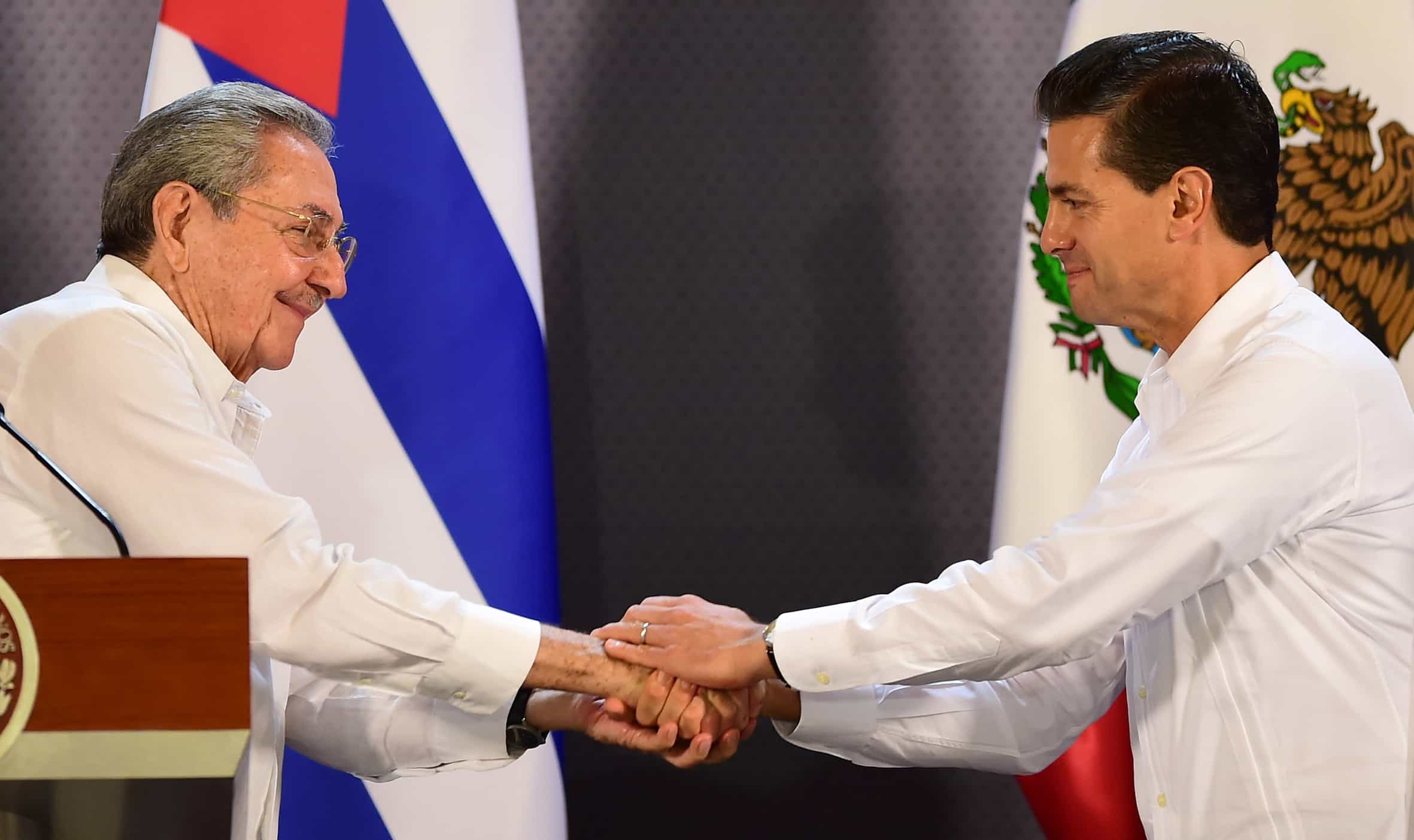With the colonial Caribbean city of Mérida serving as the backdrop, Castro was given red carpet treatment at the Yucatán state government palace for his first official visit to Mexico since taking power in 2006.
“Long live the indestructible brotherhood between the people of Cuba and Mexico,” Castro said as he delivered a speech alongside Peña Nieto following a private meeting.
For his part, Peña Nieto greeted Castro with an embrace and told him that “Mexico welcomes you with open arms.”
The two governments signed five cooperation agreements in migration, education, diplomacy, fishing and tourism. Both leaders made clear that the improved relations could lead to more investment opportunities for Mexican companies as the communist nation implements economic reforms.
“We committed both our governments to creating the conditions for Mexican businessmen and investors to invest in Cuba,” Peña Nieto said. “In Mexico, we value the new opportunities that are emerging in Cuba and we want to be an ally in this process of change.”
Cuban migration surge
The diplomatic reconciliation between the United States and Cuba has raised the prospect of new business opportunities on the island, though the U.S. embargo remains in place.
In May 2014, Mexico sent a business delegation to Havana representing 48 companies. It also opened a trade promotion office in Havana.
Mexico has several investment projects in Cuba’s Mariel mega-port.
“We are pleased by the interest that Mexican companies have in doing business and investing in Cuba, especially at the special development zone of Mariel and in sectors like agriculture and tourism,” said Castro, who returns to Havana on Saturday.
In his bid to improve ties since taking office in 2012, Peña Nieto forgave 70 percent of Cuba’s $487 million debt in 2013 and held a state visit in Havana a year later.
The U.S.-Cuba rapprochement has had another effect for Mexico, as thousands of Cubans have been entering the country on their way to the United States.
The surge is driven by fears among Cubans that the U.S.-Cuba detente will prompt Washington to stop giving them automatic visas when they step on U.S. soil.
Mexican government figures show that nearly 6,500 Cubans were taken to migration centers in the first nine months of this year, three times more than in all of 2014.
Peña Nieto said the two governments signed an agreement to broaden legal tools to ensure a “legal, safe and orderly” flow of migrants between both countries, and combat human trafficking.
Cuba-Mexico ties have waxed and waned
Castro’s visit sealed a warming of relations between two nations that have had close ties in past decades, although relations were marked by tensions between Fidel Castro and conservative Mexican governments that were in power from 2000 to 2012.
Ties were better when Peña Nieto’s Institutional Revolutionary Party (PRI) was in power for much of the 20th century.
The Castro brothers lived in exile in Mexico in the 1950s and sailed to Cuba from the eastern state of Veracruz to launch their guerrilla revolution. Mexico was the only Latin American country to resist U.S. pressure to break relations with Havana during the Cold War.
But relations turned sour under Vicente Fox’s 2000-2006 presidency, which voted to condemn Cuba at the U.N. Human Rights Council.
At a U.N. poverty summit in the northern Mexican city of Monterrey in 2002, Fox urged Fidel Castro to “eat and leave” early to avoid an awkward encounter with then-U.S. president George W. Bush.
“It’s very good that relations between Mexico and Cuba are normalizing, but it’s not as important as in the past for either country,” said Rodrigo Salazar, political expert at the Latin American Social Sciences Faculty.






